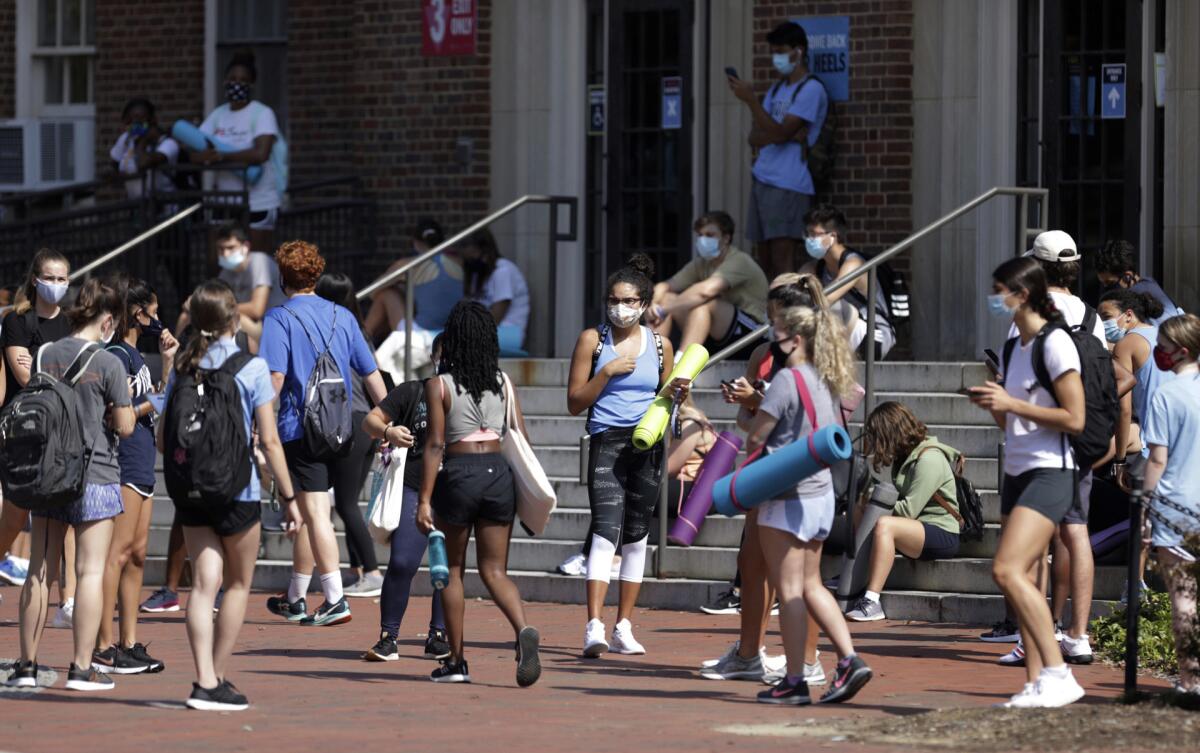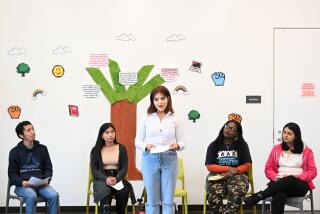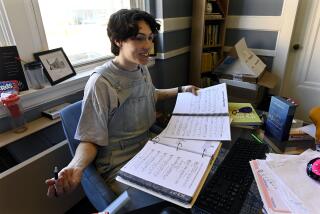Op-Ed: Why college students have a hard time living by pandemic rules (and how we can support them)

As a college professor, I am very worried about more colleges and universities opening around the country over the next few weeks. If campus communities can’t comply with social distancing requirements, thousands of students could contract COVID-19, forcing schools to scramble to shut down again and go fully remote.
Quite a few schools that have opened — with safety protocols in place — have already either closed or are struggling to deal with coronavirus spikes. Cases have been reported at colleges and universities in 36 states, including Indiana, Kentucky, North Carolina, Iowa, Alabama, Massachusetts and Mississippi. And fingers are being pointed at students for being irresponsible and dangerous for violating social distancing rules in the midst of this pandemic.
At Syracuse University in New York, for instance, the county executive admonished students for gathering in a big group on campus, calling them “boneheaded” and stating, “we are very disappointed in the choices these kids have made.” The university’s vice chancellor called the students’ behavior “selfish and unsettling.”
In Minnesota, the president of St. Olaf College, a liberal arts college, called students at his school “reckless” for gathering at an off-campus party that exposed students to the coronavirus before campus housing even opened.
Without a doubt, there will be more such examples over the next few weeks. It is important to understand why college students — members of Generation Z, born after 1996 — are taking risks to socialize despite all the guidelines. They are well aware of the dangers of COVID-19, but they are also in the age group most deeply affected by the social isolation of the pandemic and experience greater loneliness compared with older Americans.
It’s not surprising that college students would be desperate to be with their friends, even if that means ignoring COVID-19 rules. Unless college and university administrators recognize and address these social needs directly — and find outlets for social activities both in person and virtually — exhorting students to follow the rules is unlikely to work.
Data from the AEI COVID-19 and American Life Survey in June found that 61% of Gen Zers said they felt lonely a few times a week or more often. No other age group approached this level of loneliness — for millennials in their mid-20s to late 30s , it was 48%; for Gen Xers, in their 40s and early 50s, it was 35%; and for baby boomers, it was just 25%.
Feelings of depression and anxiety reveal a similar pattern. A report this month from the Centers for Disease Control and Prevention found that 46% of people between the ages of 18 and 24 reported mental health disorders related to the pandemic, compared with 36% for people age 25-44, 17% for those 45-64, and 9% for people 65 and older.
Such generational differences were found even before the pandemic, with people under 30 saying they felt more isolated than older people. What is particularly noteworthy is the intra-group change caused by the pandemic. Young people seem to be experiencing it differently and more painfully than their parents and grandparents.
In 2018, 22% of baby boomers and 35% of Gen Xers reported feeling lonely on a regular basis — and those numbers have stayed practically unchanged in recent survey results. By contrast, the percentage of Gen Zers reporting feelings of isolation rose from 52% in 2018 to 61% this year.
Given this epidemic of loneliness, it is reasonable to think college students would want to attend campus gatherings to connect with others in person. Deeper research will have to be done on the pandemic’s long-term effect on this group, and some are already seeing this moment as the start of an epidemic of depression with effects lasting possibly decades.
College leaders need to be aware of this reality as they draw up guidelines for students returning to campus — or they should keep the schools closed. They should anticipate that students will take risks to congregate. After all, until six months ago, college life was all about forming communities and doing things together.
That’s why it’s important to come up with ways to help students work through COVID-19 loneliness and fill that social need — such as with shared and safe activities like movies, music or entertainment in large, outdoor venues that can safely accommodate moderately large numbers along with offering innovative digital programming. As administrators push to resume residential campus life, they have to prevent transmission of the virus, but assigning blame and castigating students won’t help.
Reopening campuses during a pandemic is an enormous challenge, even when the vast majority of students live by the rules. Gen Zers are facing a mental health crisis, and empathy and support would go a long way in helping improve their outlook and behavior.
Samuel J. Abrams is professor of politics at Sarah Lawrence College and a visiting scholar at the American Enterprise Institute.
More to Read
A cure for the common opinion
Get thought-provoking perspectives with our weekly newsletter.
You may occasionally receive promotional content from the Los Angeles Times.










